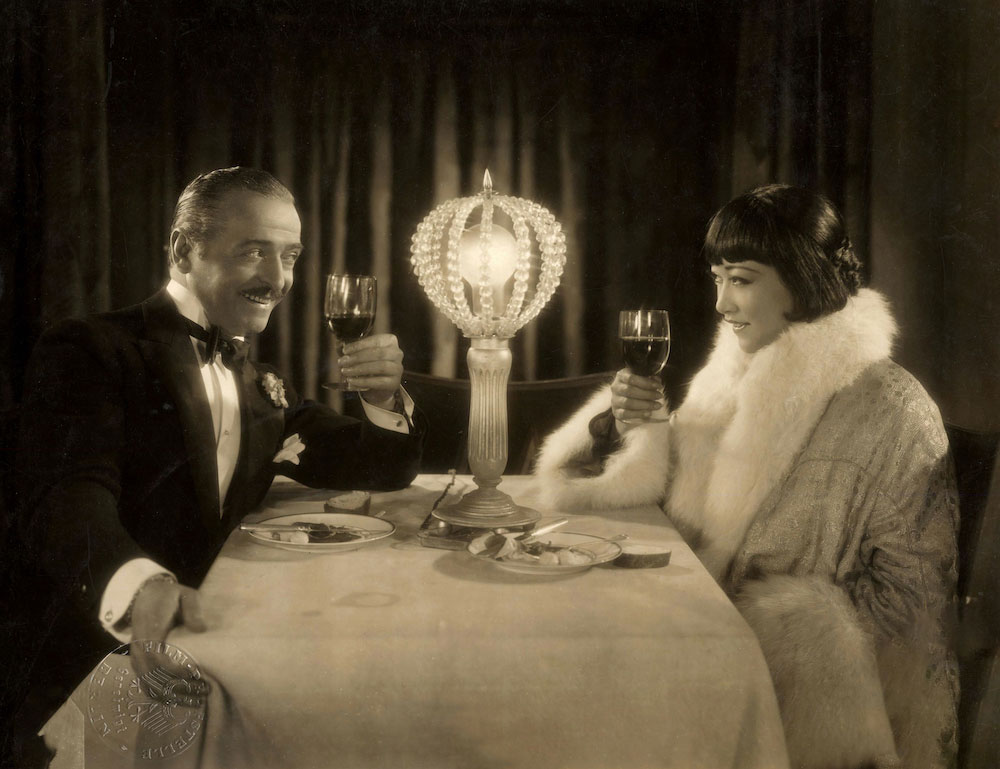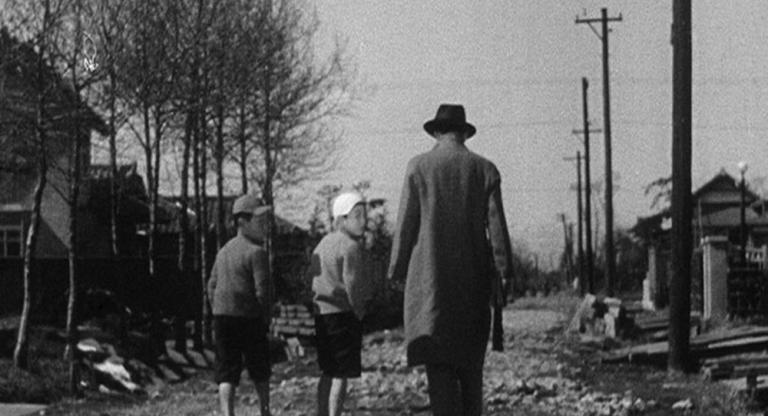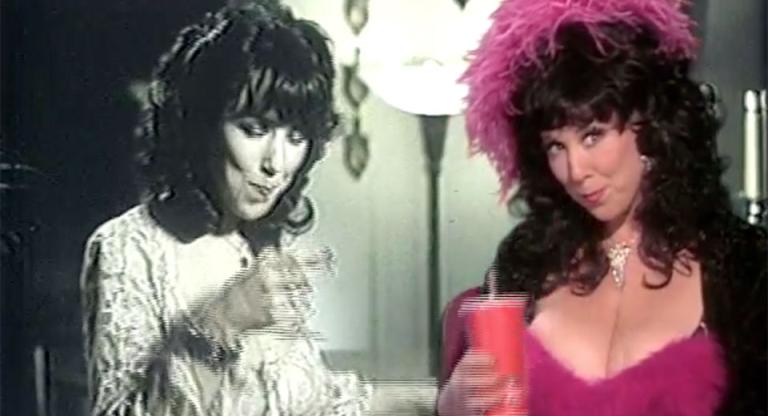December 2, 2023, could be the final time filmgoers congregate at San Francisco’s last movie palace, the 101-year-old Castro Theatre, for a day-long celebration of the art form that grand temple was built for: the silent film. At the time these films were made they were, of course, the only films around, and almost always accompanied by live musical performances. As the San Francisco Silent Film Festival (SFSFF) co-founder Stephen Salmons, who passed away earlier this year, put it:
The marriage of filmed images to live music can produce an experience so emotionally direct, it can make you feel like you’ve been hit by lightning. Withhold the down-to-earth, humdrum reality of talk and put in its place the vibrant, head-in-the-clouds beauty of music, and you find yourself responding to the film’s narrative with complete empathy.
Silent films aren’t dialogue-free; characters do talk to each other. We don’t hear what they say. Instead, we read it, on title cards. We read it to ourselves, in our own heads, in our own voices, and this makes the experience even more direct, more personal. Douglas Fairbanks, Louise Brooks, Charlie Chaplin, Clara Bow—these stars sound like every single one of us. Silent films were quickly recognized as a powerful art form not only for their dynamic visual appeal, but for the way they engage our imaginations, requiring us to play a role by contributing our own inner voices. We’re in the film, we’re part of the story, it’s happening to us just as much as it’s happening to Rudolph Valentino.
Valentino was the first of these audience stand-ins to be seen several stories high at the Castro. His star-making World War I drama directed by Rex Ingram, Four Horsemen of the Apocalypse (1921), was one of five feature films shown during the theater’s opening week in June 1922. This Saturday, one of his last and best films, The Eagle, a 1925 action-adventure that is arguably Valentino’s only other film directed by an important auteur, Clarence Brown, will screen from a 35mm Photoplay Productions print, accompanied by pianist Wayne Barker and introduced by local Valentino scholar Donna Hill. It’s all part of A Day of Silents, SFSFF’s companion event to its full festival, held at the Castro almost every winter since 2005, when another Valentino film, Beyond the Rocks (1922), re-premiered after decades assumed lost.
A month ago, SFSFF announced their next full-length festival will run at a venue other than the Castro for the first time: the Palace of Fine Arts Theatre, on the northern edge of the city. The move raises anxious questions for festival fans: Will having 400 fewer seats impact prices or program decisions? What will the projection be like? (Nobody I’ve asked can remember 35mm running at the Palace since 2009, much less prints that require variable-speed projectors like The Eagle.) Is there anywhere good to eat within walking distance? What’s the best route to connect from BART? And after Another Planet Entertainment’s planned architectural alterations to the Castro are completed in 2025 (as APE spokesman David Perry projects), is there any chance the festival might return to its first home?
Pending an answer to this last question, Saturday’s slate might well be the final set of silent-era films screened at the Castro, where the festival has perfected these presentations since they were first imagined in the early 1990s by its other co-founder, Melissa Chittick. This year’s Day of Silents, packed with five feature-length films and a slate of 10 silent cartoons, feels full of callbacks to the festival’s history.
The only repeat presentation is the most famous and rewatchable film of the bunch, featuring an image that represents to the public not only its star, Harold Lloyd, but silent films as a whole, and indeed the “Roaring Twenties” in a rectangular time capsule: a bespectacled man gripping the minute hand of a giant clock towering above downtown Los Angeles. Watching Safety Last! (1923) with an appreciative audience is an experience that might even turn an obstinate silent-movie hater around. The skyscraper-climb sequence is justifiably legendary, not least because Lloyd performed the stunt with only eight fingers, his right pointer and thumb having been blown off by a bomb prop mishap three years prior. Most of the moments leading up to the quintessential “thrilling finale” are so inventive; it’s a shame that many first experience the clock scene out of context. This will be the second time SFSFF has brought the Mont Alto Motion Picture Orchestra in from Colorado to accompany the film. When they and a new digital version closed the 2013 festival, there were times when audience laughter completely drowned out their instruments.
Mont Alto risks being laughed over again during the noon showing of The Wildcat (1921), directed by Ernst Lubitsch and starring Pola Negri shortly before they emigrated from Germany to Hollywood. I’ve been waiting patiently to see this in a cinema, having missed the last local opportunity fifteen years ago, so I can only say that Mont Alto’s own description of the film—“as though somehow Mel Brooks were directing a Strauss operetta on sets by Dr. Seuss”—makes it sound as enticing as the many other Lubitsch pictures screened by the festival over the years.
There’s a worthwhile detour here via Lubitsch, through the Castro’s queer and silent film history: silents were effectively banished from the Castro from 1930, when the theater was wired for sound, until 1976, when Mel Novikoff took over operations and began running classic cinema; he installed an organ and hired Bob Vaughn to perform to the occasional silent film—the first was Harold Lloyd as The Freshman (1925). Soon after, Novikoff began inviting film festivals to use the venue. The 1982 San Francisco International Lesbian and Gay Film Festival (now Frameline) opened with a celebration of the Castro’s 60th anniversary by having Vaughn accompany a film just as old: Alla Nazimova and Charles Bryant’s Salomé (1922), an independently made UFO of an Oscar Wilde adaptation, rumored to feature an all-queer cast. Followed by a panel led by activist and film historian Vito Russo, who’d met the love of his life Jeffrey Sevcik at the Castro the year before, this event launched a festival tradition of presenting LGBTQ-themed silent films—like Different from the Others (1919), starring Conrad Veidt, or Gloria Swanson as The Danger Girl (1916)—through the 1980s and early ’90s. When the 1993 festival went without a silent, Chittick and Salmons proposed Lubitsch’s gender-bending satire I Don’t Want To Be A Man (1918) for the next year. In 1994, that screening became the first co-presentation of the Silent Film Festival, which would itself officially launch two years later at the Castro. Many festivals start small and graduate to grander venues, but thanks to midwifing from the queer film community SFSFF was born at a 1,400-seat movie palace, and has always embraced and extended this history as a key part of its identity.
Joining The Wildcat on Saturday is another German film, Pavement Butterfly (1929), a rarely revived entry in the popular Weimar-era genre known as the Straßenfilm (street film). Named for Karl Grune’s The Street (1923), this genre cycle also includes such films as F.W. Murnau’s The Last Laugh (1924), G. W. Pabst’s The Joyless Street (1925) and Pandora’s Box (1929), among others, many of which have screened at prior SFSFF events. Director Richard Eichberg distinguished Pavement Butterfly by filming in Paris and on the French Riviera, and by casting the Chinese American star Anna May Wong as the film’s lead, a dancer surviving by her wits and beauty amidst a dangerous society of gamblers, artists, and thieves.
California native Wong has been an intermittent staple of SFSFF events; in 2001, the first year I attended, she appeared as Tiger Lily in the 1924 production of Peter Pan, and she’s since been seen in The Thief of Bagdad (1924), Outside the Law (1921), Piccadilly (1929), and in conjunction with her appearance on newly minted U.S. quarters, her breakout film The Toll of the Sea (1922) at last December’s Day of Silents. Pavement Butterfly is one of the great examples of what industry racism deprived of Wong and the world: she has the presence and the acting chops to carry Hollywood “A” pictures, but she was never really given a chance, forced to travel overseas to achieve top billing in the few quality productions she was offered even there. I’m sure we’ll get more detail in the introduction provided by Yunte Huang, whose new biography of Wong, Daughter of the Dragon, is full of deep scholarship and delightful turns of phrase, many in the form of quotes from Wong herself. Pavement Butterfly will be presented in a brand-new 4K version prepared by Deutsches Filminstitut and Filmmuseum in collaboration with the German Federal Archives at Cinegrell Postfactory, with musical accompaniment by the Sascha Jacobsen Ensemble.
The same group (or, rather, a slightly different configuration of it, with a clarinetist and a percussionist swapping in for a saxophonist and violinist) will provide the music for the final film of the day, one that probably hasn’t screened in San Francisco since its original release 95 years ago: Victor Schertzinger’s Forgotten Faces (1928), starring three veterans of Josef von Sternberg’s silent masterpieces. Clive Brook (Underworld, 1927), William Powell (The Last Command, 1928) and Olga Baclanova (The Docks of New York, 1928) are better remembered for early talkies—Shanghai Express (1932), The Thin Man (1934), Freaks (1932)—but their silent work is consistently stellar. I have yet to see Forgotten Faces because I’m saving that experience for Saturday night, when it will likely become the final film introduced at the Castro by TCM’s Noir Alley host and Film Noir Foundation president Eddie Muller. Muller, who founded the other major film festival that got its start at the Castro (but which has moved to Oakland’s Grand Lake for its past few and upcoming incarnations) has frequently been asked to present SFSFF selections that feel like “proto-noir” gems. I’m eager to hear the “Czar of Noir” relate this remake of a lost 1920 film to the genre he’s helped preserve and promote for decades, and give his goodbye to the theater where so many of us were first introduced to him. It will have been 33 years to the day since Vito Russo’s memorial at the Castro following his death from AIDS, when his and Jeffrey Sevcik’s intermingled ashes were placed by friends in the back wall of the balcony.
A Day of Silents will be presented this Saturday, December 2, at the Castro Theatre by the San Francisco Silent Film Festival.





